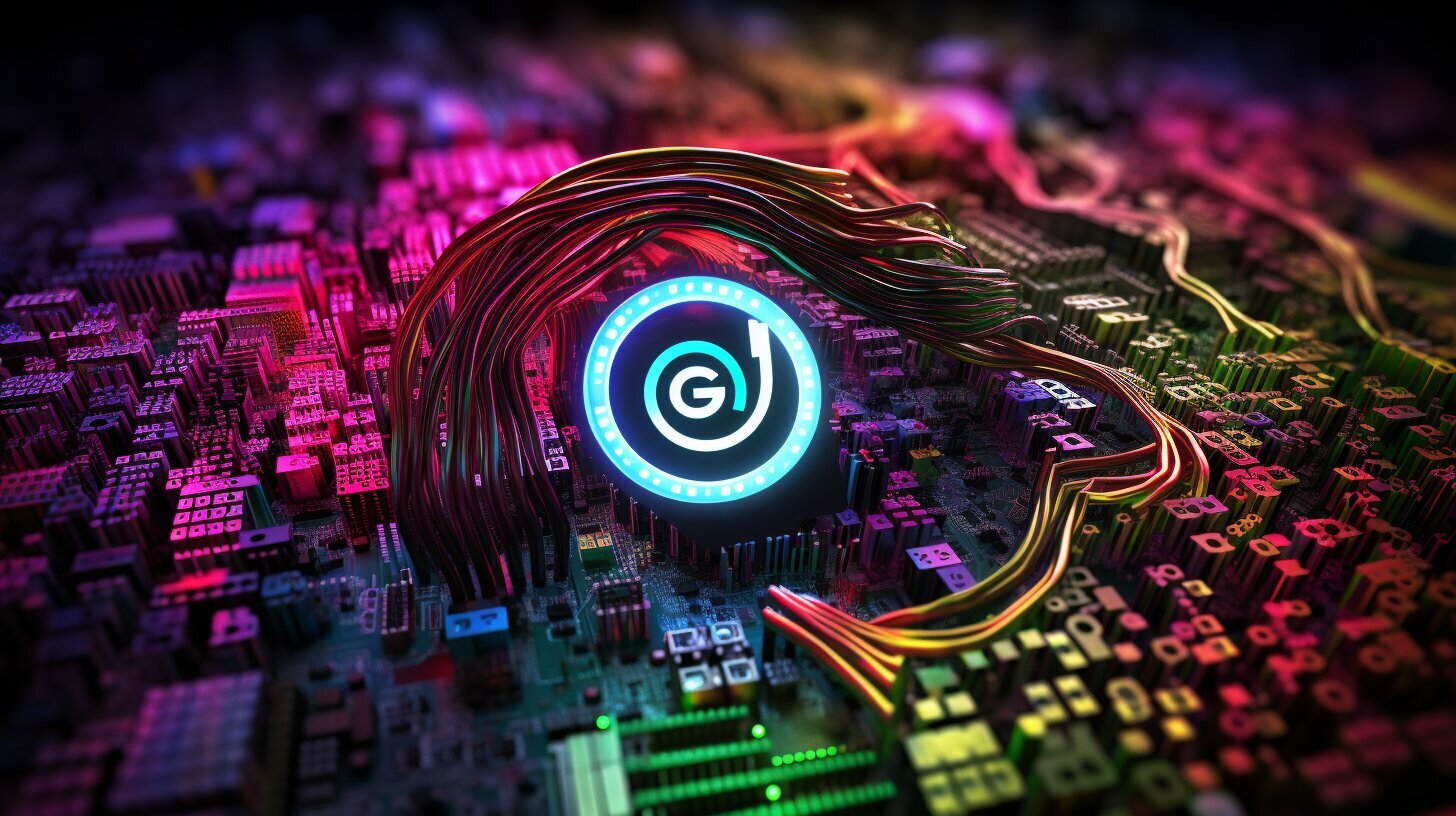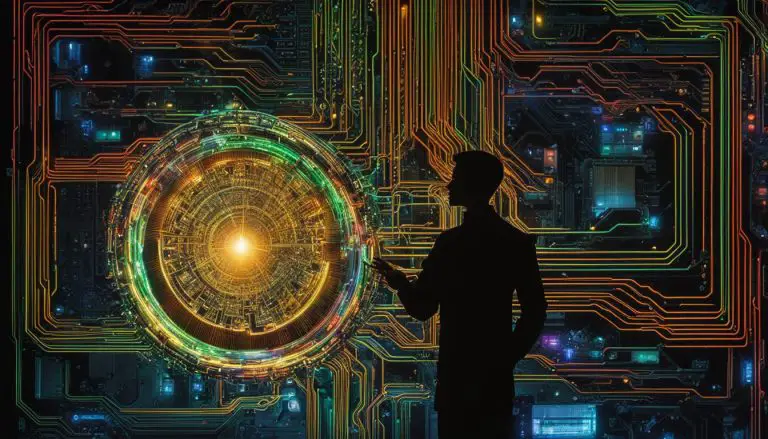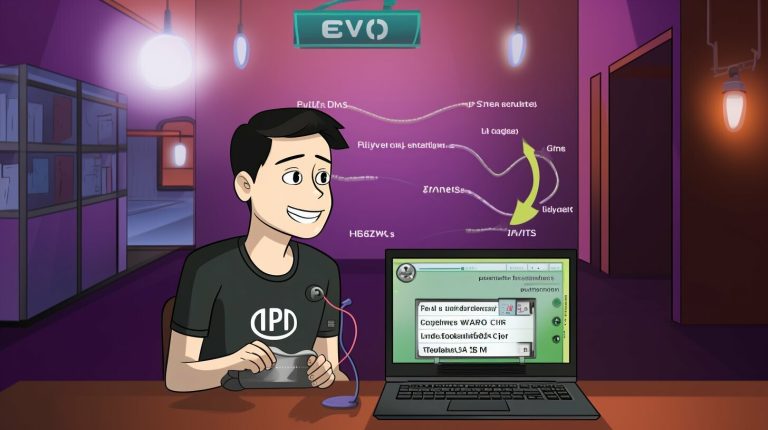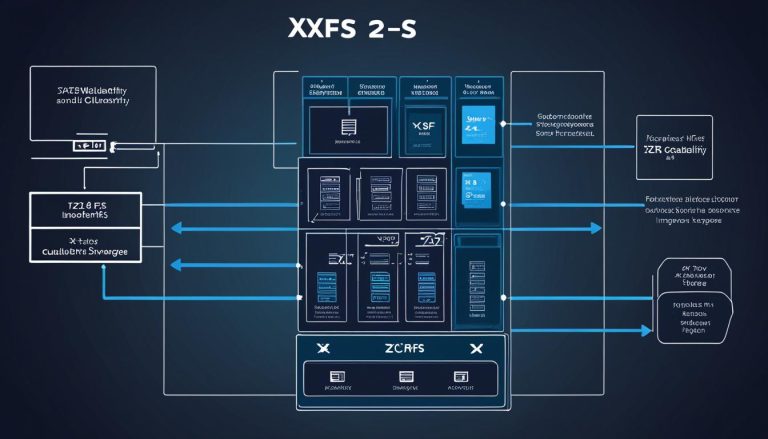Uncovering the Basics: What is Debian Linux Explained
Debian Linux is an open-source operating system that offers a comprehensive range of features and benefits for both beginners and experienced users. As a full-featured and freely available distribution of the Linux operating system, Debian is highly regarded for its stability, security, and versatility. With over 59,000 software packages, Debian provides a vast library of applications and tools that can be easily installed and operated. This robust package management system ensures that users have access to a wide range of software options, making it suitable for a variety of use cases.
Debian is known for its strict adherence to free software principles, which means it prioritizes user freedom and community collaboration. Through the contributions of a global network of volunteers, Debian is constantly evolving, ensuring that it remains up to date and responsive to user needs. Debian supports multiple computer architectures, including the primary Debian distribution as well as ports to other kernels such as GNU/Hurd and FreeBSD. This flexibility makes Debian a popular choice among government organizations, educational institutions, and businesses around the world.
Within the Debian system, users can utilize both a graphical user interface (GUI) environment and virtual consoles to interact with the operating system. The graphical interface provides a user-friendly design, while virtual consoles offer additional flexibility and control over system management tasks. To ensure file integrity and system stability, it is crucial to follow proper shutdown procedures in Debian Linux. By shutting down the system correctly, users can protect their files and prevent potential data loss.
For enhanced functionality and usability, Debian recommends additional packages such as mc, vim, and sudo. These packages can further customize the user experience and provide essential tools for system administration tasks.
Overall, Debian Linux offers a powerful and reliable operating system that empowers users of all levels of experience. Whether you’re a beginner exploring the world of Linux or an advanced user seeking a stable and versatile platform, Debian has you covered.
Key Takeaways:
- Debian Linux is an open-source operating system with a comprehensive range of features and benefits.
- Debian offers over 59,000 software packages and is constantly evolving through community contributions.
- Debian strictly adheres to free software principles, prioritizing user freedom and collaboration.
- Debian supports multiple computer architectures and is popular among governments, educational institutions, and businesses.
- The graphical user interface (GUI) and virtual consoles provide user-friendly and flexible interaction options.
Understanding Debian Linux’s Features and Advantages
Debian Linux boasts an impressive array of features and advantages that make it a top choice for users looking for a stable and versatile operating system. With its commitment to free software principles, Debian offers over 59,000 software packages, ensuring users have access to a vast library of applications for their specific needs. Furthermore, Debian’s robust package management system simplifies software installation, updates, and removal, making it efficient and user-friendly.
One of the key advantages of Debian Linux is its wide range of supported computer architectures. Whether you’re using an x86 machine, a Raspberry Pi, or even a mainframe computer, Debian can be installed and operated seamlessly. This flexibility allows Debian to cater to a diverse user base, from individual enthusiasts to large organizations.
The Debian Linux community plays a significant role in the ongoing development and support of the operating system. With contributions from volunteers around the world, Debian is constantly evolving and improving. This collaborative nature ensures that Debian remains up-to-date with the latest technologies and security patches, providing users with a stable and secure environment for their computing needs.
The Power of Debian Linux’s Graphical User Interface (GUI)
Debian Linux offers a user-friendly graphical user interface (GUI), making it accessible and intuitive for both new and experienced users. The GUI provides a visually appealing and responsive environment, allowing users to navigate and interact with the operating system effortlessly. From managing files and folders to launching applications, Debian’s GUI enhances productivity and streamlines the user experience.
| Key Features: | Advantages: |
|---|---|
| Stable and Versatile | Debian Linux provides a reliable and adaptable platform for various computing needs. |
| Large Software Repository | With over 59,000 software packages, Debian offers a wide range of applications for different purposes. |
| Robust Package Management System | Debian’s package management system simplifies software installation, updates, and removal. |
| Support for Multiple Architectures | Debian can be installed on various computer architectures, accommodating different hardware requirements. |
| Active and Supportive Community | The Debian Linux community provides ongoing development and support, ensuring a vibrant ecosystem for users. |
Debian Linux is a reliable, feature-rich, and community-driven operating system that offers a stable and versatile platform for users. With its vast software repository, robust package management system, and support for multiple architectures, Debian provides a comprehensive solution for individuals, organizations, and businesses. Whether you’re a beginner or an advanced user, Debian’s user-friendly graphical interface and active community support make it an ideal choice for your computing needs.
As you explore Debian Linux, you’ll discover its immense potential and the endless possibilities it offers. Whether you’re a developer, a student, or an enterprise user, Debian’s features and advantages will empower you to achieve your goals efficiently and effectively.
Installing Debian Linux: A Step-by-Step Guide
Installing Debian Linux is a straightforward process that can be easily accomplished by following a few simple steps. Whether you’re a beginner or an experienced user, this step-by-step guide will walk you through the installation process, ensuring a successful setup of Debian Linux on your system.
Step 1: Download the Debian Linux ISO
Start the installation process by downloading the Debian Linux ISO file from the official website. Choose the appropriate ISO image based on your computer architecture and requirements. Once the download is complete, verify the integrity of the ISO file using the provided checksums.
Step 2: Create a Bootable USB Drive
After downloading the ISO file, create a bootable USB drive using a tool like Etcher or Rufus. Insert the USB drive into your computer and follow the instructions provided by the tool to create a bootable USB drive with the Debian Linux ISO.
Step 3: Boot from the USB Drive and Start the Installation
Now, restart your computer and boot from the USB drive. On the boot menu, select the USB drive as the primary boot device. The Debian Linux installation process will start, guiding you through various configuration steps.
Follow the on-screen prompts to select your preferred language, keyboard layout, and location. Choose a hostname for your system and set the domain name if applicable. Create a root password for the administrator account, ensuring its strength and security.
Next, partition your hard drive by selecting the appropriate disk and creating the desired partitions. Choose a file system, such as ext4, and define mount points for each partition. Review and confirm your choices before proceeding.
Step 4: Package Selection and Installation
Once the partitioning is complete, the package selection screen will appear. Choose the software packages you want to install, such as the desktop environment, web server, or development tools. Debian Linux offers a vast selection of software packages, allowing you to customize your system according to your needs.
After selecting the packages, the installation process will begin, copying the necessary files to your hard drive. Sit back and relax as Debian Linux installs all chosen packages. This may take a while depending on the size of the installation and the speed of your system.
Step 5: Reboot and Enjoy Debian Linux
Once the installation is complete, you’ll receive a prompt to reboot your system. Remove the USB drive and restart your computer. Debian Linux will now boot from your hard drive, and you’ll be greeted with the login screen of your chosen desktop environment.
Congratulations! You have successfully installed Debian Linux on your system. Explore its features, customize your desktop, and enjoy the robustness and reliability that Debian Linux offers.
| Step | Instructions |
|---|---|
| 1 | Download the Debian Linux ISO from the official website |
| 2 | Create a bootable USB drive using Etcher or Rufus |
| 3 | Boot from the USB drive and follow the installation prompts |
| 4 | Select software packages for installation |
| 5 | Reboot your system and enjoy Debian Linux |
Debian Linux vs Other Linux Distributions: A Comparison
Debian Linux stands out among other Linux distributions due to its unique characteristics and approach to software development. With its emphasis on free software principles and robust package management system, Debian offers users a full-featured and customizable operating system that is both reliable and secure.
One notable aspect that sets Debian apart is its extensive software repository, which boasts over 59,000 packages. This vast collection allows users to easily install and operate a wide range of applications, ensuring that their specific needs are met. In comparison, other Linux distributions may have a smaller selection of available packages, limiting user options.
Furthermore, Debian’s strict adherence to free software principles has garnered it a loyal following among government organizations, educational institutions, and businesses. The commitment to open-source software promotes transparency and encourages collaboration, driving continuous improvement and innovation within the Debian community.
Another distinguishing factor is Debian’s support for multiple computer architectures. While it is primarily based on the Linux kernel, Debian also offers ports to other kernels such as GNU/Hurd and FreeBSD. This versatility ensures that users can choose the best platform for their specific hardware requirements.
| Feature | Debian Linux | Other Linux Distributions |
|---|---|---|
| Software Packages | Over 59,000 | Varies |
| Free Software Principles | Strict adherence | Varies |
| Support for Multiple Architectures | Yes | Varies |
In conclusion, Debian Linux offers a comprehensive and flexible platform that stands out among other Linux distributions. With its extensive software repository, commitment to free software principles, and support for multiple architectures, Debian provides users with a powerful and customizable operating system. Whether you are a government organization, educational institution, or business, Debian Linux offers a reliable and secure solution for your computing needs.
Exploring the Debian Linux Commands
Understanding and familiarizing yourself with Debian Linux commands is crucial for effectively managing and operating the system. Whether you are a beginner or an experienced user, having a solid grasp of the command line interface will greatly enhance your ability to navigate, configure, and troubleshoot Debian Linux.
Debian Linux provides a wide range of powerful commands that allow you to perform various tasks, from managing files and directories to networking and system administration. Some popular commands include:
-
1ls
: This command lists the files and directories in the current directory.
-
1cd
: Used to change the current directory.
-
1mkdir
: Creates a new directory.
-
1rm
: Removes a file or directory.
-
1apt-get
: The package management command for installing, updating, and removing software packages.
-
1grep
: Searches for specific patterns or text within files.
-
1chmod
: Changes the permissions of a file or directory.
These commands are just a small sample of the extensive toolkit available in Debian Linux. By exploring and familiarizing yourself with these commands, you will gain greater control and efficiency in managing your system.
| Command | Description | ||
|---|---|---|---|
|
List files and directories | ||
|
Change the current directory | ||
|
Create a new directory | ||
|
Remove a file or directory |
Mastering the Command Line Interface
The command line interface of Debian Linux provides a powerful and efficient way to interact with the system. It allows you to perform complex operations quickly and efficiently, making it an invaluable tool for system administrators, developers, and power users.
When using the command line, it’s important to understand the basic structure of a command. A typical command consists of a command name followed by optional arguments and options. Arguments specify the objects or files on which the command should operate, while options modify the behavior of the command.
Mastering the command line interface takes time and practice, but it is an investment that pays off in the long run. By familiarizing yourself with Debian Linux commands, you will gain greater control and flexibility in managing your system.
In conclusion, exploring the Debian Linux commands is essential for successfully navigating and controlling your system. By gaining familiarity with the command line interface and mastering key commands, you can efficiently manage and operate your Debian Linux system.
The Debian Linux Community: A Thriving Ecosystem
The Debian Linux community is a vibrant and supportive ecosystem that fosters collaboration and encourages the sharing of knowledge and resources. With its open-source philosophy, Debian has attracted a dedicated community of users, developers, and contributors who work together to improve and expand the operating system.
One of the key strengths of the Debian community is its inclusiveness and diversity. People from all walks of life, with varying levels of expertise, come together to contribute to the development and maintenance of Debian. Whether you are a seasoned Linux user or a curious beginner, there is a place for you in this welcoming community.
To facilitate collaboration and communication, the Debian community provides various channels to connect with fellow users and developers. The official Debian mailing lists, forums, and IRC channels are bustling with activity, where users can seek assistance, share ideas, and discuss new developments. Additionally, regular Debian conferences and local meetups provide opportunities for community members to connect face-to-face and strengthen their relationships.
Table 1: Debian Linux Community Resources
| Resource | Description |
|---|---|
| Mailing Lists | A platform for discussions, announcements, and technical support. |
| Forums | An online community where users can ask questions and share knowledge. |
| IRC Channels | Real-time chat rooms for interactive discussions and assistance. |
| Debian Conferences | Annual gatherings of Debian enthusiasts, featuring talks and workshops. |
| Local Meetups | Informal gatherings organized by local Debian communities worldwide. |
Moreover, the Debian community values documentation and strives to provide comprehensive resources for users. The official Debian website hosts an extensive knowledge base, including manuals, guides, and FAQs, ensuring that users can find the information they need to troubleshoot issues and explore Debian’s features.
By fostering a collaborative environment, the Debian Linux community plays a crucial role in the ongoing development and success of the operating system. Its active participation and dedication help shape Debian into a reliable, secure, and user-friendly distribution that continues to gain popularity among individuals, organizations, and institutions worldwide.
Unraveling the Debian Linux System Requirements
Before diving into Debian Linux, it’s important to ensure that your system meets the required specifications to run the operating system efficiently. Debian Linux is a robust and versatile distribution, but it does have certain system requirements that need to be met for optimal performance.
Minimum System Requirements:
- Processor: Intel Pentium 4 or AMD Athlon 64 processor
- Memory: 1GB RAM
- Storage: 10GB of available disk space
- Graphics Card: 1280×1024 resolution
- Network Connectivity: Ethernet adapter for network installation
These are the minimum system requirements for running Debian Linux. However, it’s worth noting that these specifications may vary depending on the specific purpose or workload you have in mind. For example, if you plan on running resource-intensive applications or services, you may need a more powerful system with higher RAM or a faster processor.
Recommended System Requirements:
- Processor: Intel Core i3 or AMD Ryzen 3 processor
- Memory: 4GB RAM or more
- Storage: 20GB of available disk space or more
- Graphics Card: 1920×1080 resolution with 3D acceleration
- Network Connectivity: Ethernet adapter for network installation
If you want to take full advantage of Debian Linux’s capabilities, it’s recommended to meet or exceed the recommended system requirements. This will ensure smooth performance and allow you to run multiple applications simultaneously without any noticeable slowdowns.
Debian Linux is a versatile operating system that can run on various hardware configurations. Whether you’re using an older machine or a modern system, Debian Linux offers flexibility and reliability. By understanding and meeting the system requirements, you can create a stable and efficient environment for your Debian Linux installation.
| Type | Minimum Requirements | Recommended Requirements |
|---|---|---|
| Processor | Intel Pentium 4 or AMD Athlon 64 processor | Intel Core i3 or AMD Ryzen 3 processor |
| Memory | 1GB RAM | 4GB RAM or more |
| Storage | 10GB of available disk space | 20GB of available disk space or more |
| Graphics Card | 1280×1024 resolution | 1920×1080 resolution with 3D acceleration |
| Network Connectivity | Ethernet adapter for network installation | Ethernet adapter for network installation |
The Power of Debian Linux: Exploring the Package Management System
A major strength of Debian Linux lies in its powerful and efficient package management system, which streamlines the process of installing, updating, and removing software. This robust system ensures that users have access to a vast repository of over 59,000 software packages, covering a wide range of applications, libraries, and tools.
Debian Linux’s package management system is designed to simplify the software management process, making it easy for users to find and install the packages they need. Whether you’re a developer looking for programming languages and frameworks, a system administrator in need of server software, or an everyday user seeking productivity tools or multimedia applications, Debian’s package management system has you covered.
One of the standout features of Debian’s package management system is its dependency resolution capabilities. When installing a package, Debian automatically pulls in any additional software or libraries that are required, ensuring that all dependencies are met. This eliminates the hassle of manually tracking and installing dependencies, making the overall software installation process smoother and more streamlined.
Furthermore, Debian’s package management system simplifies the process of updating software. With a simple command, users can check for available updates and easily upgrade their installed packages to the latest versions. This ensures that users have access to the most up-to-date features, bug fixes, and security patches. Similarly, removing software is also effortless, allowing users to uninstall packages and free up disk space with just a few commands.
| Key Features of Debian Linux’s Package Management System: |
|---|
| Automatic dependency resolution |
| Effortless software installation |
| Easy updates and upgrades |
| Simple package removal |
| Access to a vast repository of software packages |
Debian’s commitment to free software principles is also reflected in its package management system. The vast majority of software available through Debian’s repositories is open source, ensuring that users can freely use, modify, and share the software.
In conclusion, Debian Linux’s package management system is a powerful tool that enables users to efficiently manage their software ecosystem. With its extensive repository of software packages, automatic dependency resolution, and easy updates and removals, Debian makes it convenient for users to find, install, and maintain the software they need. This aspect, combined with Debian’s strong focus on free software principles, solidifies its position as a top choice for individuals, organizations, and businesses seeking a reliable and flexible operating system.
A Look at Debian Linux’s Graphical User Interface (GUI)
Debian Linux offers a sleek and intuitive graphical user interface (GUI) that enables users to navigate and interact with the operating system effortlessly. The GUI provides a visually appealing desktop environment that is customizable and user-friendly. It allows users to perform various tasks such as file management, application launching, and system configuration in a seamless manner.
One of the key features of Debian Linux’s GUI is its support for multiple desktop environments, including GNOME, KDE, Xfce, and LXQt. Each desktop environment offers a unique look and feel, allowing users to choose the one that best suits their preferences and workflow. Whether you prefer a minimalist and lightweight interface or a more feature-rich and customizable experience, Debian Linux has got you covered.
In addition to the desktop environments, Debian Linux’s GUI also includes a range of pre-installed applications that cater to different needs. From productivity tools like LibreOffice and GIMP to multimedia players like VLC and Rhythmbox, the GUI provides a comprehensive suite of applications for everyday use. Users can access these applications easily through the application launcher or by adding shortcuts to the desktop.
| Desktop Environment | Key Features |
|---|---|
| GNOME | Modern and polished interface with excellent touch support |
| KDE | Highly customizable and feature-rich environment |
| Xfce | Lightweight and efficient, suitable for older hardware |
| LXQt | Lightweight and fast, with a clean and simple interface |
With its visually appealing interface, extensive range of desktop environments, and a plethora of pre-installed applications, Debian Linux’s GUI provides an exceptional user experience. Whether you are a beginner or an experienced user, you can easily navigate through the system and accomplish your tasks with ease.
An Introduction to Debian Linux Virtual Consoles
Debian Linux allows users to access virtual consoles, providing a powerful and versatile way to interact with the operating system through the command prompt. Virtual consoles are multiple instances of the command line interface that can run concurrently, allowing users to perform various tasks simultaneously. Each virtual console functions as an independent session, offering a distinct environment for executing commands and managing system resources.
When logging into Debian Linux, users are provided with a default virtual console called tty1. By pressing the Ctrl+Alt+F1 keys, users can switch to tty2 and access another virtual console. This flexibility offers the ability to work on multiple tasks simultaneously, such as running a program in one virtual console while monitoring system logs in another. To switch between virtual consoles, simply use the Ctrl+Alt+F2, Ctrl+Alt+F3, and so on until Ctrl+Alt+F6 keys.
| Virtual Console | Terminal | Description |
|---|---|---|
| tty1 | /dev/tty1 | The default virtual console on boot |
| tty2 – tty6 | /dev/tty2 – /dev/tty6 | Additional virtual consoles |
Virtual consoles offer a range of benefits for Debian Linux users. They facilitate efficient multitasking and provide a reliable means to troubleshoot system issues. In the event of a graphical user interface (GUI) failure, virtual consoles allow users to access the command prompt and perform administrative tasks to resolve the problem. Additionally, virtual consoles can be accessed remotely over a network connection, enabling system administration tasks from any location.
Tip:
To switch back to the default graphical user interface (GUI) from a virtual console, press the Ctrl+Alt+F7 keys. This will bring you back to your desktop environment.
Maintaining File Integrity: Proper Shutdown Procedures in Debian Linux
In Debian Linux, it is crucial to adhere to proper shutdown procedures to prevent data loss and maintain the overall stability of the operating system. When shutting down Debian Linux, it’s important to follow a few simple steps to ensure that all files are closed properly and the system is safely powered off.
- Save your work: Before shutting down your Debian Linux system, make sure to save any open files and close all running applications. This will help avoid data loss and ensure that all changes are properly saved.
- Log out of your user account: To begin the shutdown process, log out of your user account. This can be done by clicking on the “Log Out” option in the system menu or by using the command “logout” in the terminal.
- Power off the system: Once you have logged out, you can safely power off your Debian Linux system. This can be done by clicking on the “Shutdown” or “Power Off” option in the system menu, or by using the command “sudo shutdown -h now” in the terminal.
By following these simple steps, you can ensure that your files are closed properly, and your Debian Linux system is shut down safely. This will help prevent data loss and maintain the integrity and stability of your operating system.
| Shutdown Procedure | Command | ||
|---|---|---|---|
| Save your work and close applications | N/A | ||
| Log out of your user account | N/A | ||
| Power off the system |
|
Recommended Additional Packages for Debian Linux
While Debian Linux offers an extensive selection of software packages, there are several additional packages that can greatly enhance your experience and productivity. These recommended packages provide additional functionality and tools that are not included in the default Debian installation, allowing you to customize your Linux distribution to suit your specific needs.
One such package is mc, which stands for Midnight Commander. This file manager and visual shell allows for easy navigation and manipulation of files and directories. With its dual-pane interface and support for various file operations, mc is a powerful tool for both beginners and advanced users.
Another essential package for Debian Linux users is vim. Known for its powerful text editing capabilities, vim is a versatile and highly configurable text editor that offers features such as syntax highlighting, search and replace functionality, and support for various programming languages. With its wide range of plugins and customization options, vim is a favorite among developers and power users.
For users who require administrative privileges, the sudo package is indispensable. Sudo allows regular users to execute specific commands with root privileges, providing a secure and controlled way to perform administrative tasks. This package is especially useful in multi-user environments where system administrators need to grant limited access to certain commands.
| Package | Description |
|---|---|
| mc | A file manager and visual shell with dual-pane interface and various file operations. |
| vim | A versatile and highly configurable text editor with powerful editing capabilities and support for multiple programming languages. |
| sudo | A package that allows users to execute specific commands with root privileges, providing secure and controlled access for administrative tasks. |
These packages are just a few examples of the many additional packages available for Debian Linux. Whether you are a developer, power user, or simply looking to customize your Linux experience, exploring and installing these recommended packages can greatly enhance your Debian Linux system and cater to your specific needs.
Conclusion
In conclusion, Debian Linux stands as a robust and versatile operating system with an active community, powerful package management, and a wealth of software options. It is an excellent choice for users seeking stability, reliability, and the freedom of open-source software.
Debian Linux, being a full-featured and free distribution of the Linux operating system, offers over 59,000 software packages and is constantly evolving thanks to contributions from volunteers. Its strict adherence to free software principles makes it a popular choice among governments, educational institutions, and businesses.
The primary Debian distribution supports multiple computer architectures, providing flexibility and compatibility. With the root account’s unlimited power, system administration tasks become seamless. The graphical user interface (GUI) environment and virtual consoles offer user-friendly navigation and command prompt access.
Debian Linux’s robust package management system simplifies software installation, updates, and removal. Additionally, following proper shutdown procedures is essential to maintain file integrity and system stability.
To further enhance the functionality and usability of Debian Linux, recommended additional packages like mc, vim, and sudo can be easily installed. Users also have the flexibility to create extra user accounts and configure sudo for administrative privileges.
With its extensive features, active community, and commitment to open-source principles, Debian Linux proves to be a reliable and powerful choice for users from various backgrounds. Whether you’re a beginner or an experienced user, Debian Linux offers the stability, reliability, and freedom you seek in an operating system.
FAQ
What is Debian Linux?
Debian Linux is a full-featured and free distribution of the Linux operating system. It offers over 59,000 software packages and is known for its strict adherence to free software principles and robust package management system.
What are the advantages of using Debian Linux?
Debian Linux is popular among governments, educational institutions, and businesses due to its stability, security, and support for multiple computer architectures. It also provides a vast selection of easily installable software packages.
How do I install Debian Linux?
The installation of Debian Linux can be done by following a step-by-step guide. The process will include downloading the Debian installer, creating installation media, and configuring the installation settings.
How does Debian Linux compare to other Linux distributions?
Debian Linux has its unique features and advantages compared to other Linux distributions. It is known for its emphasis on stability and security, as well as its commitment to free software principles.
What are some essential Debian Linux commands?
Debian Linux provides a variety of commands for navigating and interacting with the system. Some essential commands include navigating the file system, installing packages, and managing users and permissions.
Tell me more about the Debian Linux community.
The Debian Linux community is a thriving ecosystem of volunteers who contribute to the development and maintenance of the distribution. It offers extensive support, documentation, and collaboration opportunities.
What are the system requirements for Debian Linux?
To run Debian Linux, you will need a compatible computer system with sufficient processor, memory, and storage capabilities. The specific requirements may vary depending on the version and intended use of Debian Linux.
How does Debian Linux’s package management system work?
Debian Linux’s package management system allows for easy installation, updates, and removal of software packages. It ensures proper dependency handling and simplifies the management of software on the system.
Does Debian Linux have a graphical user interface (GUI)?
Yes, Debian Linux offers a graphical user interface (GUI) environment that provides a user-friendly design and ease of use. It allows users to interact with the system through windows, icons, menus, and other graphical elements.
What are virtual consoles in Debian Linux?
Virtual consoles in Debian Linux are multiple instances of a command-line interface that can be accessed simultaneously. They provide additional flexibility and control over system management, allowing users to run multiple commands and applications concurrently.
What is the importance of proper shutdown procedures in Debian Linux?
Following proper shutdown procedures in Debian Linux is crucial to maintain the integrity of files and ensure system stability. It allows for the proper saving of data and closing of running processes, minimizing the risk of data loss and system errors.
Are there any recommended additional packages for Debian Linux?
Yes, some recommended additional packages for Debian Linux include mc (Midnight Commander) for file management, vim (Vi IMproved) for text editing, and sudo for granting administrative privileges to users. These packages enhance the functionality and usability of Debian Linux.
- About the Author
- Latest Posts
Mark is a senior content editor at Text-Center.com and has more than 20 years of experience with linux and windows operating systems. He also writes for Biteno.com





